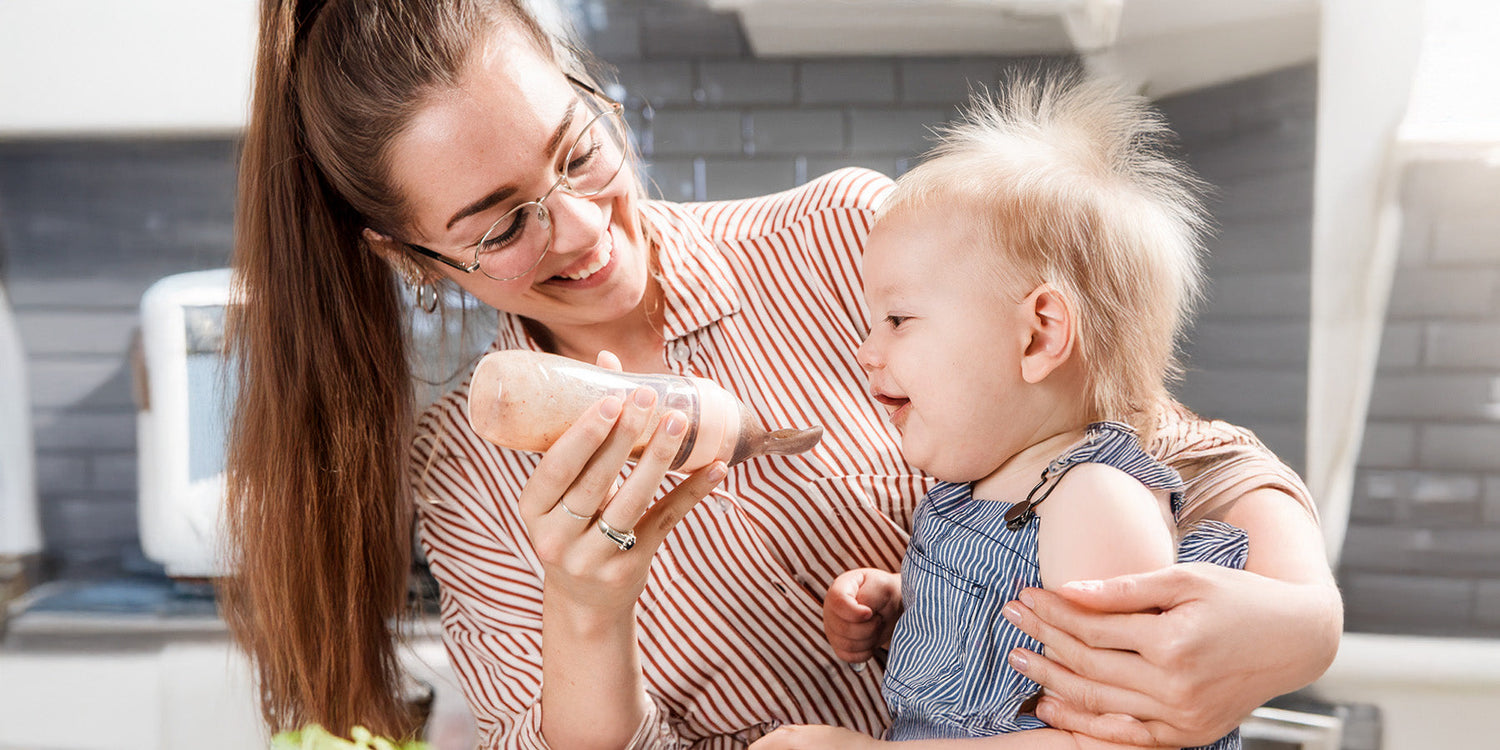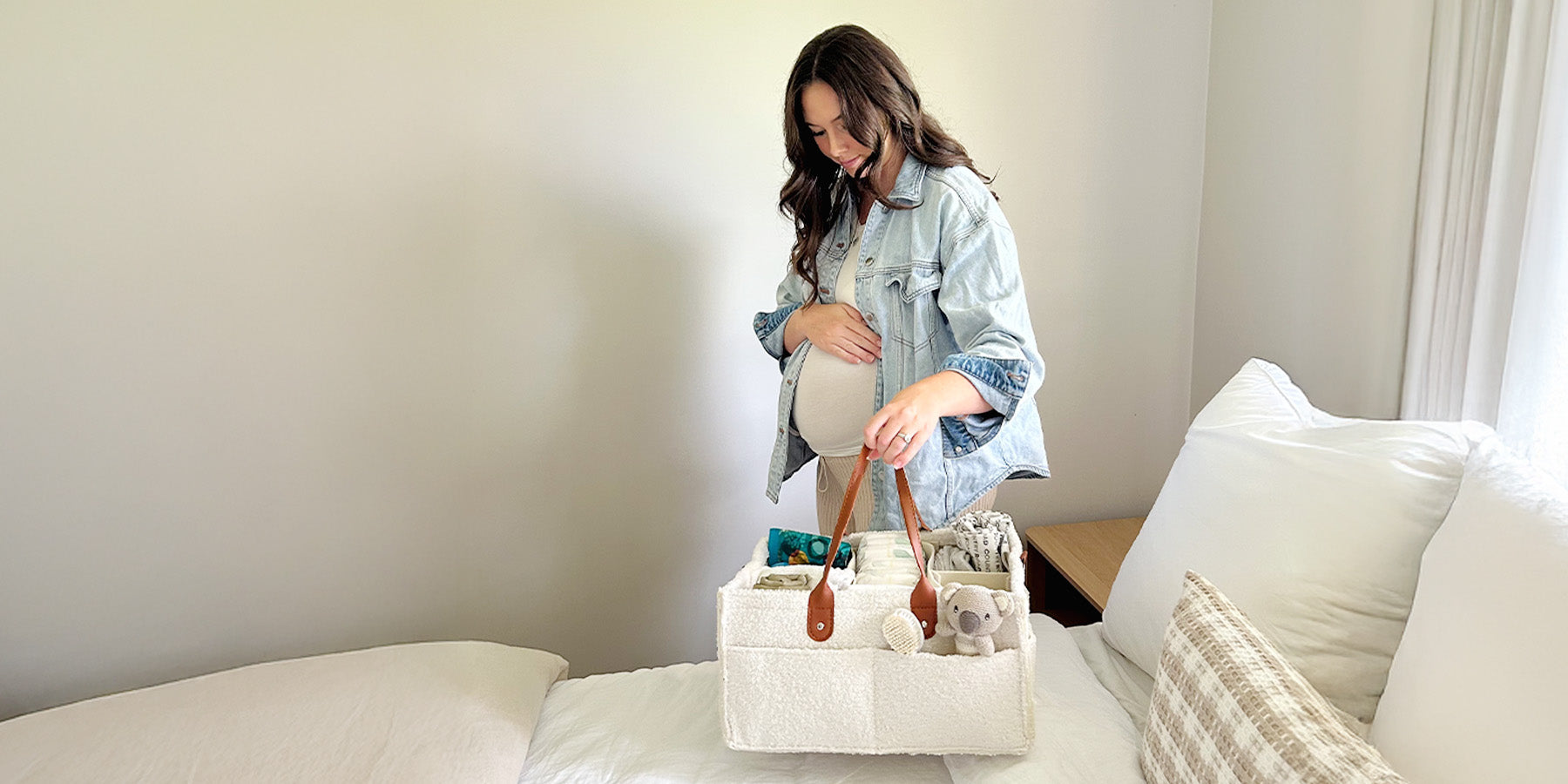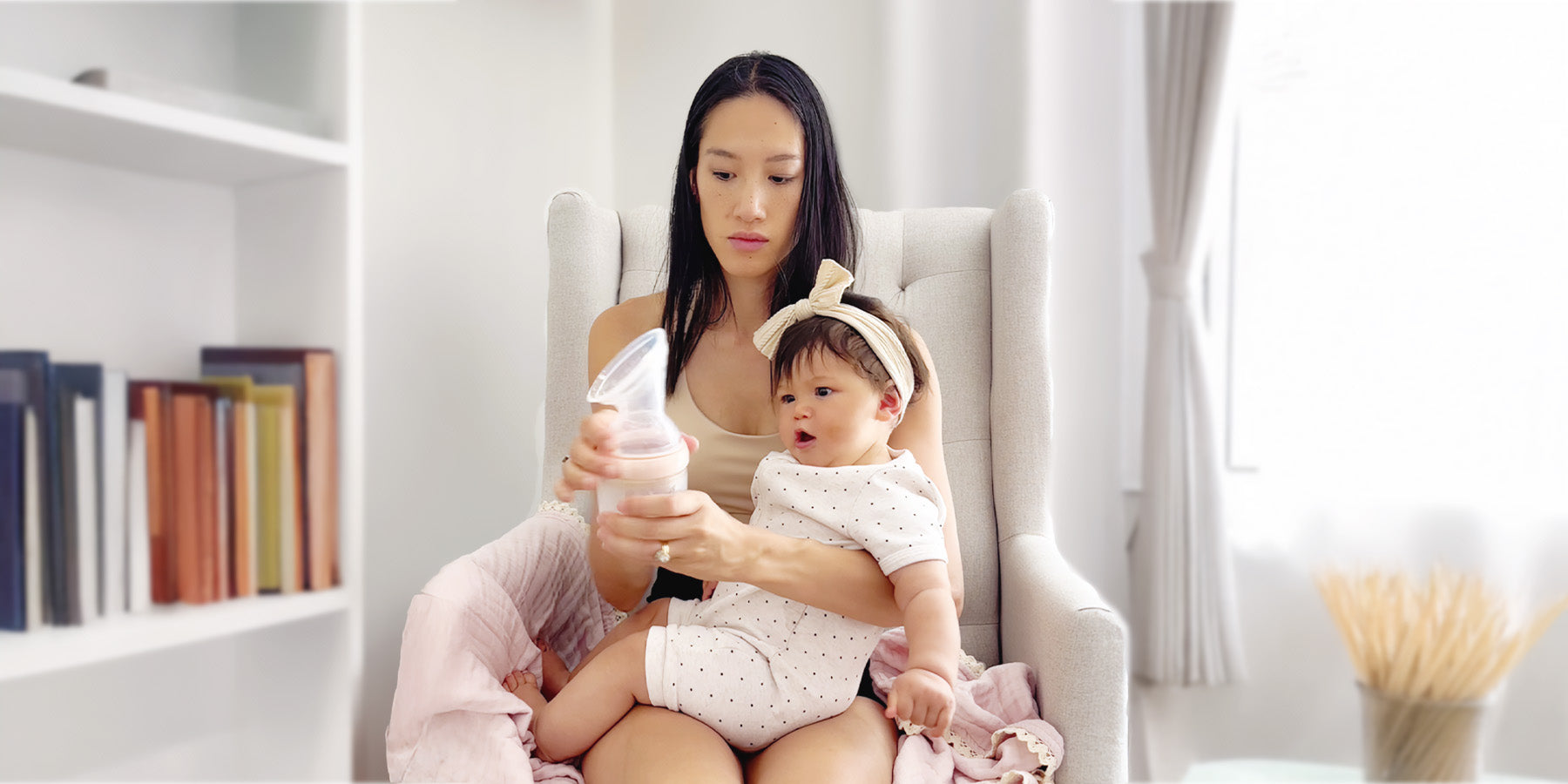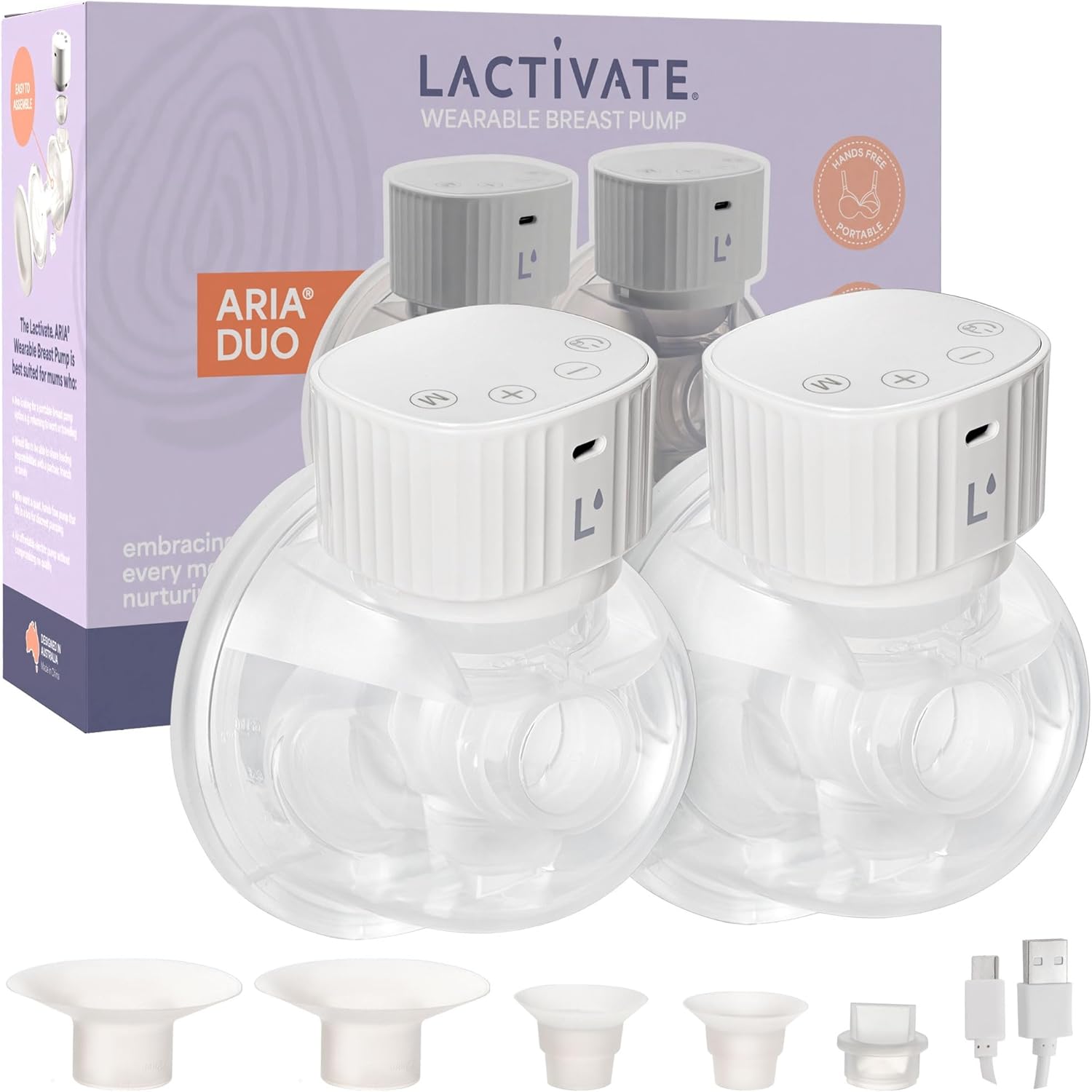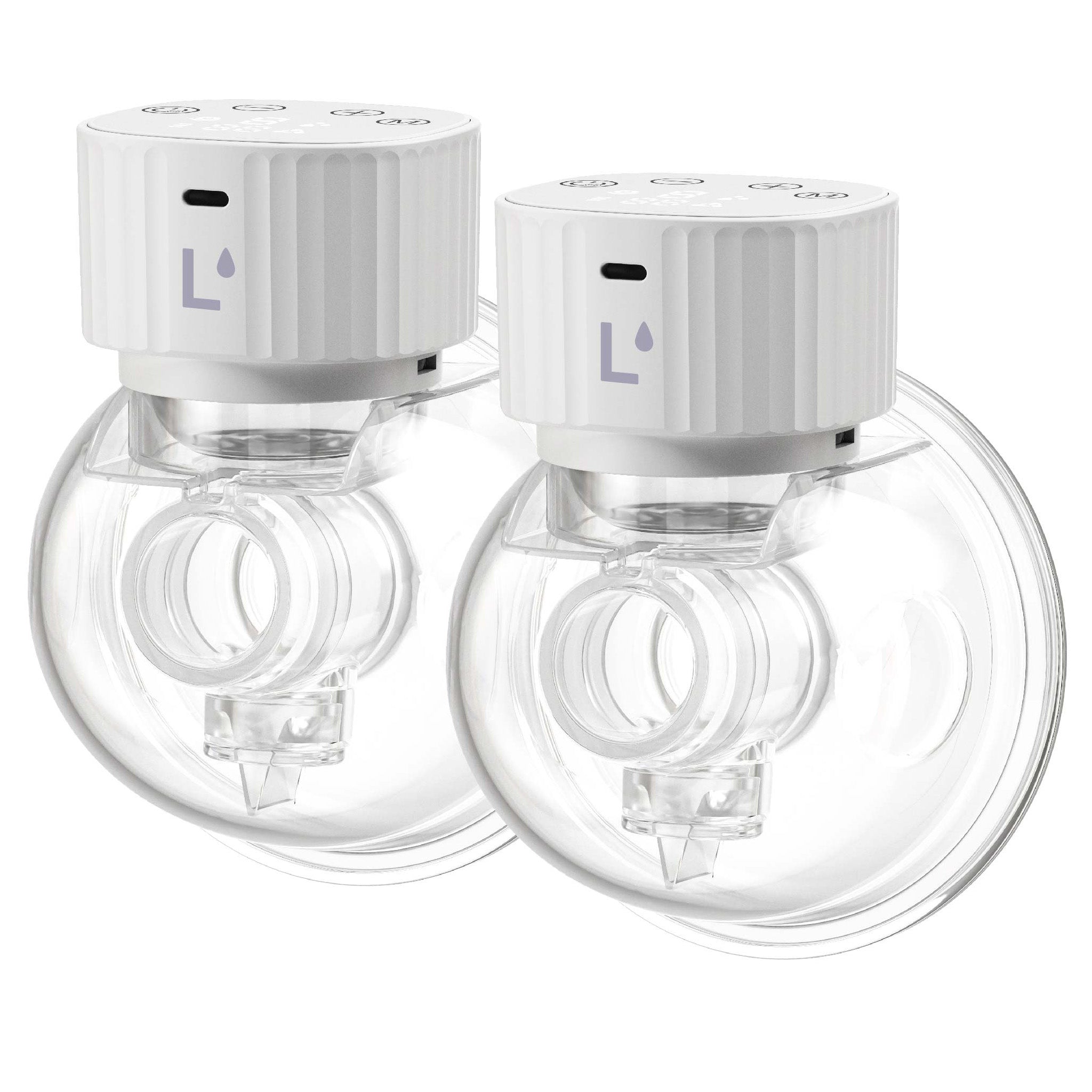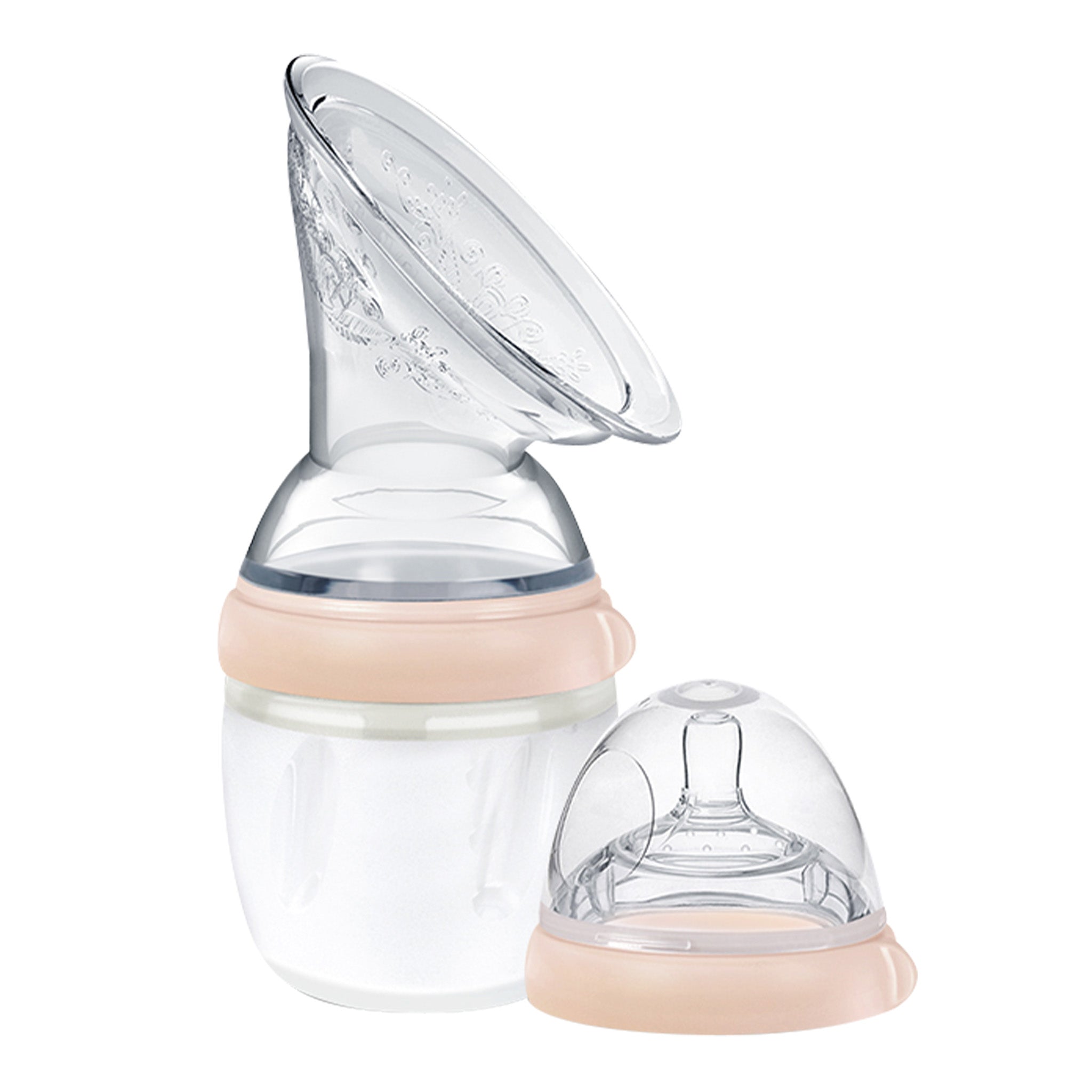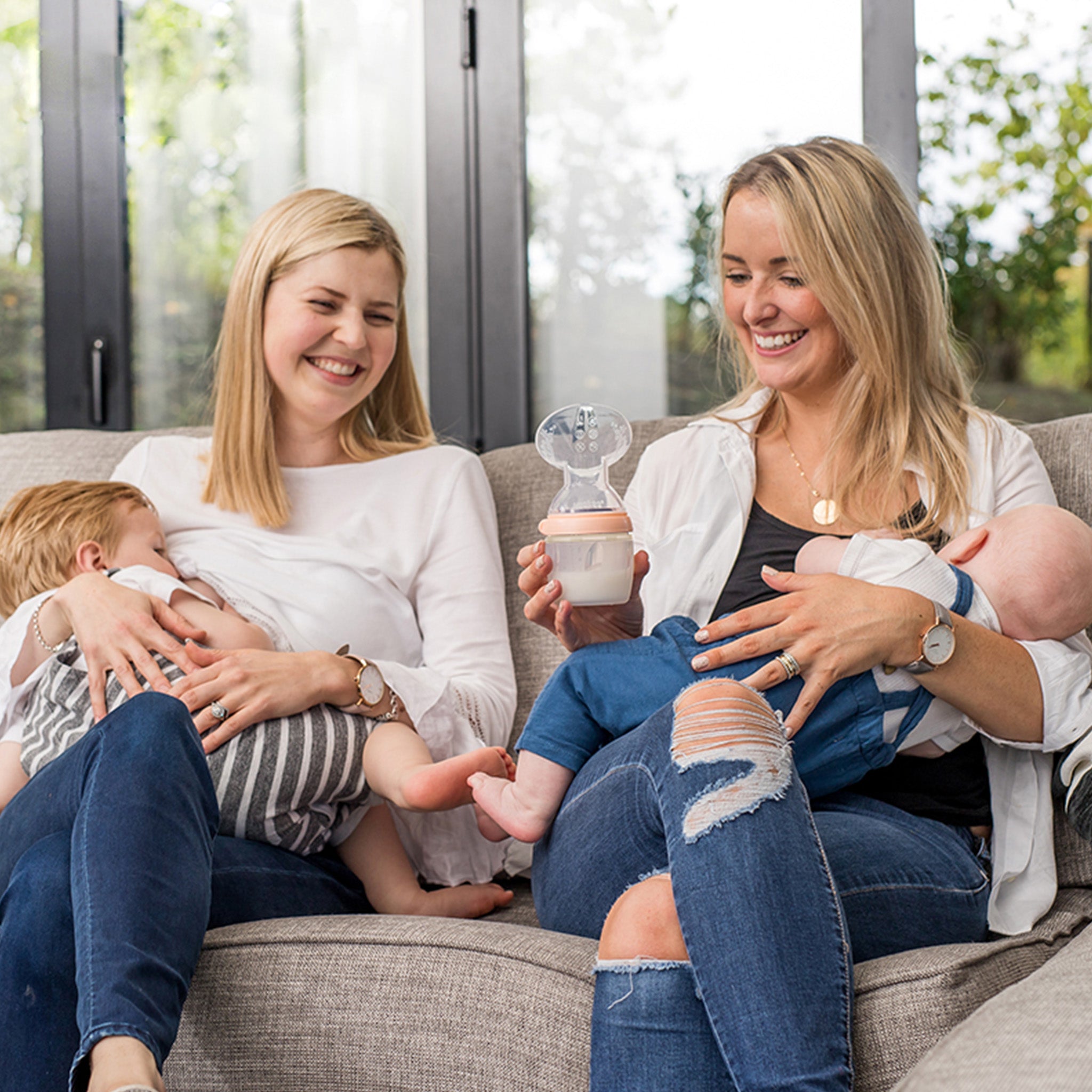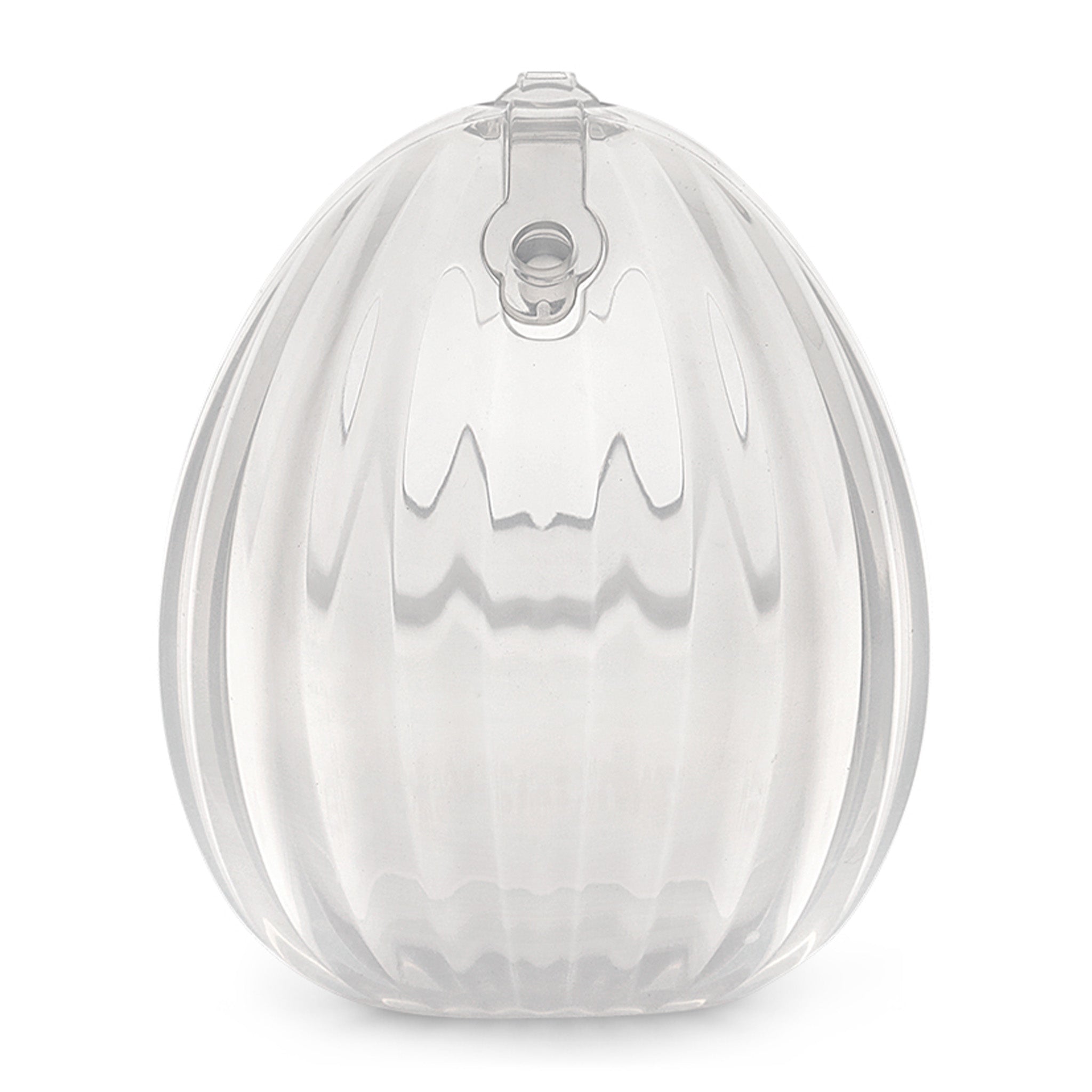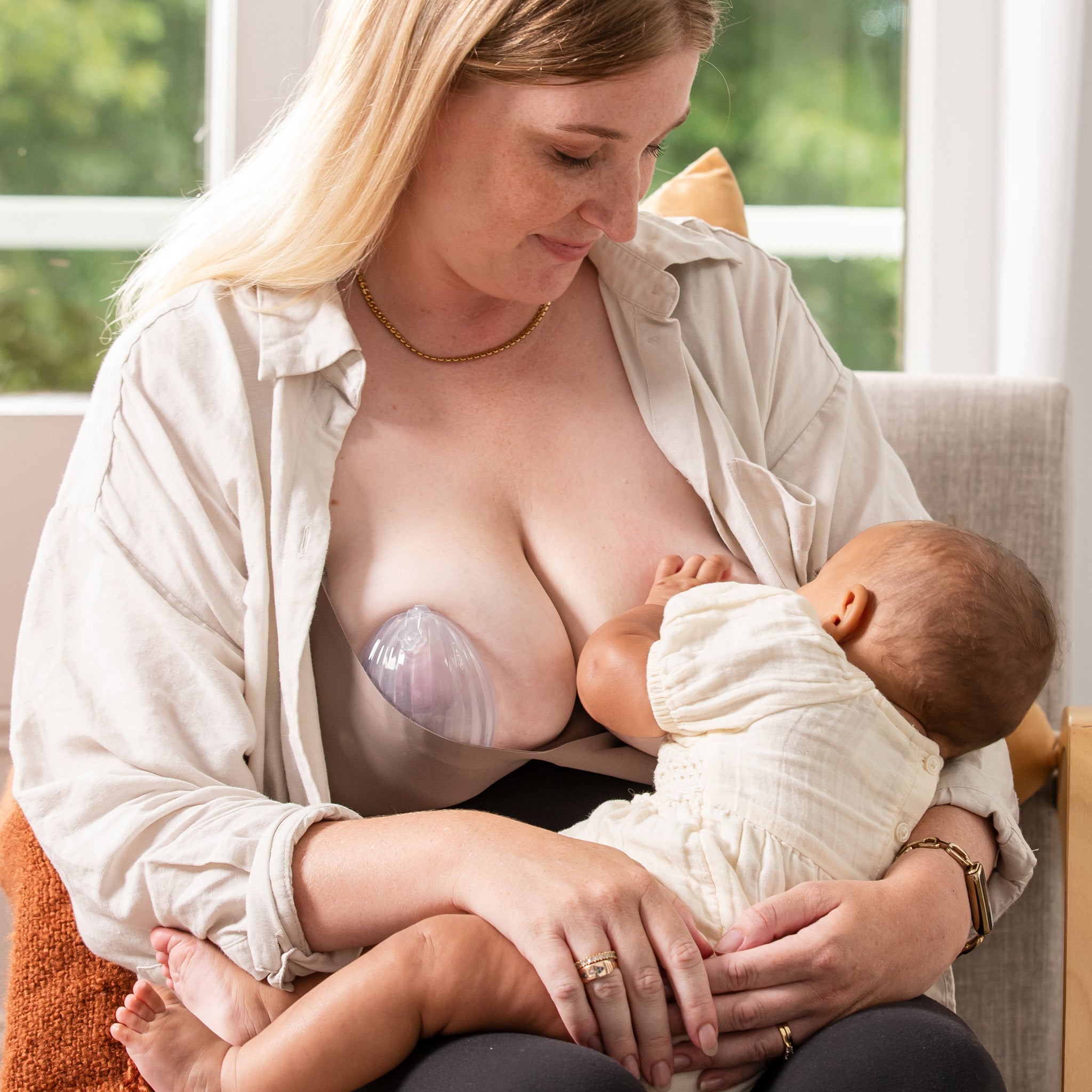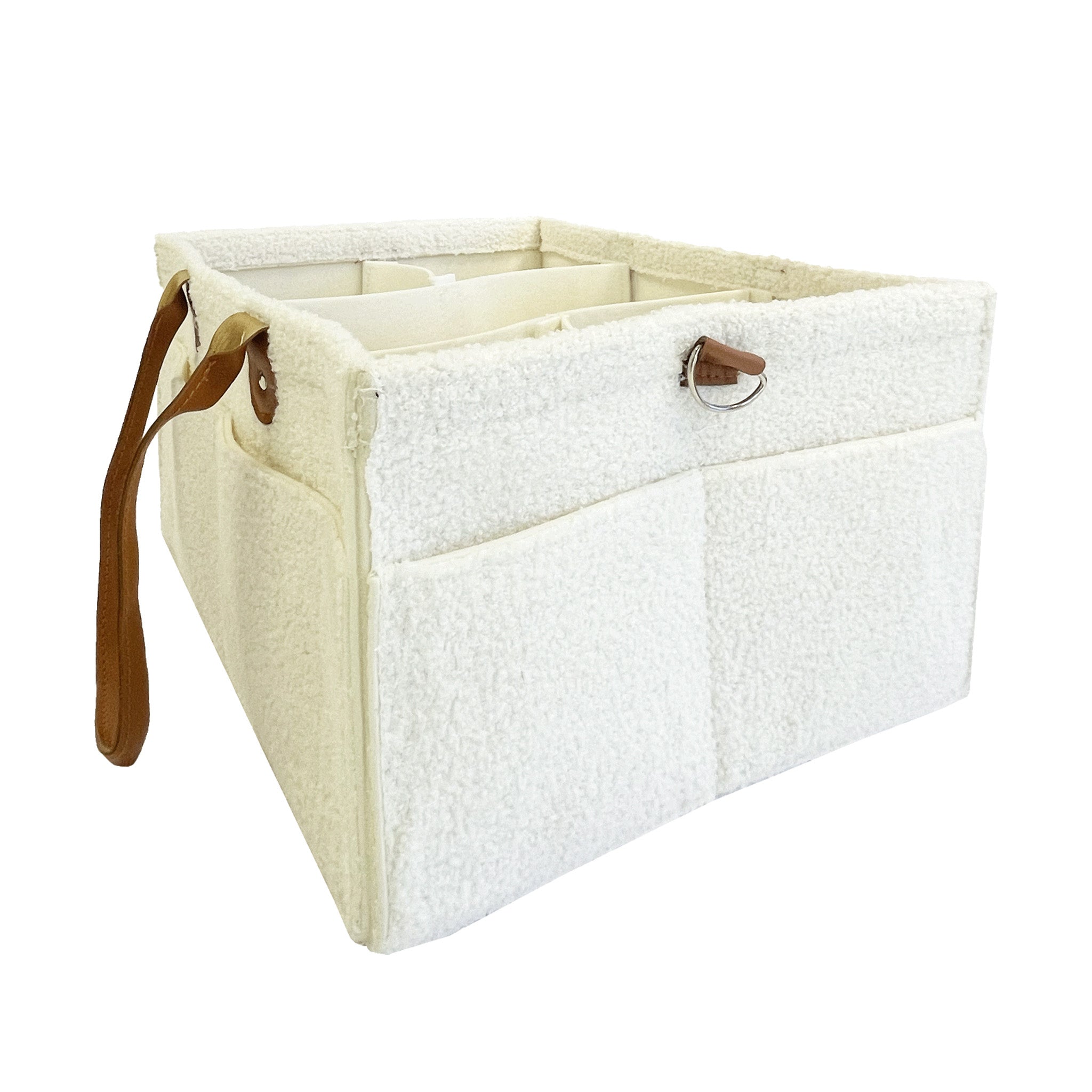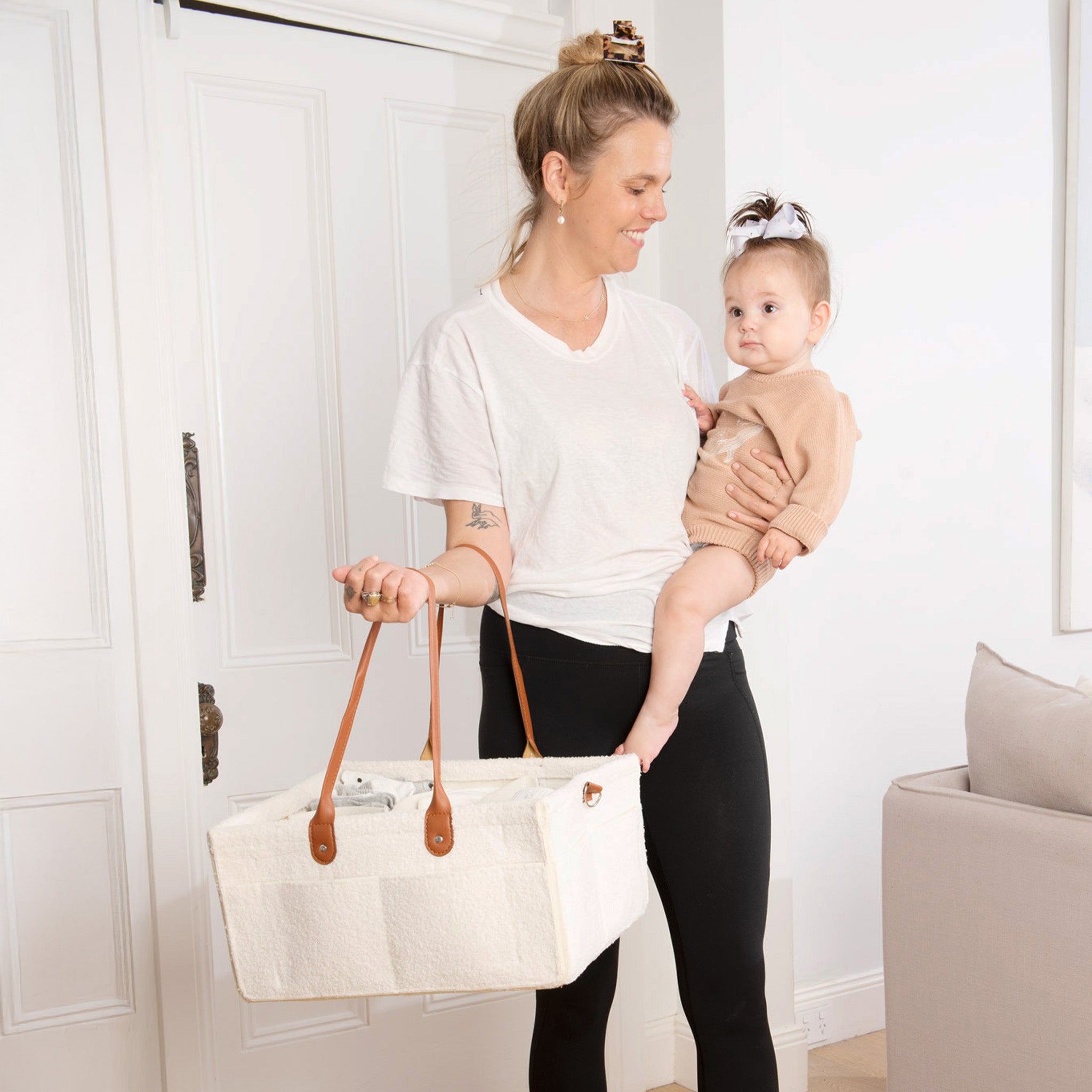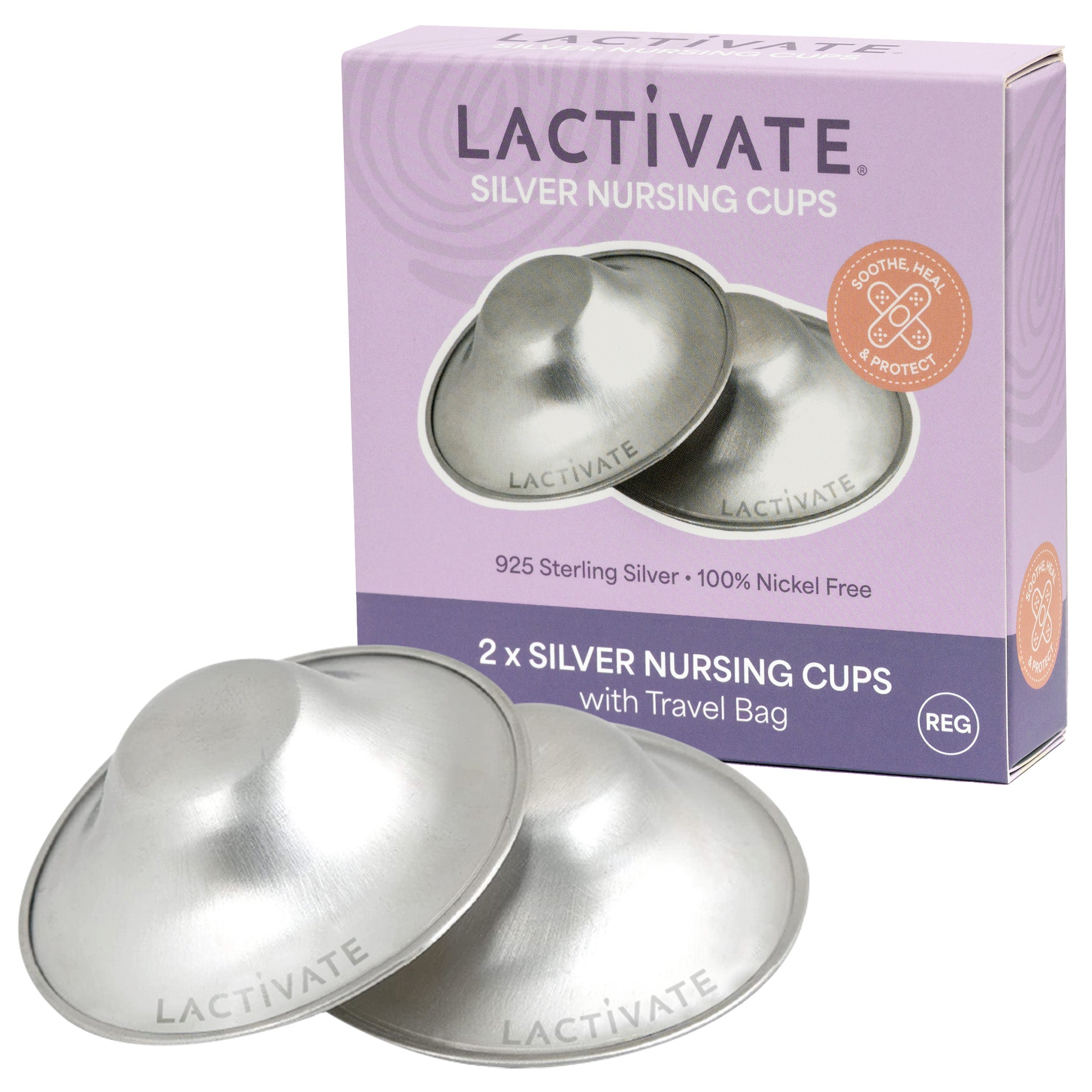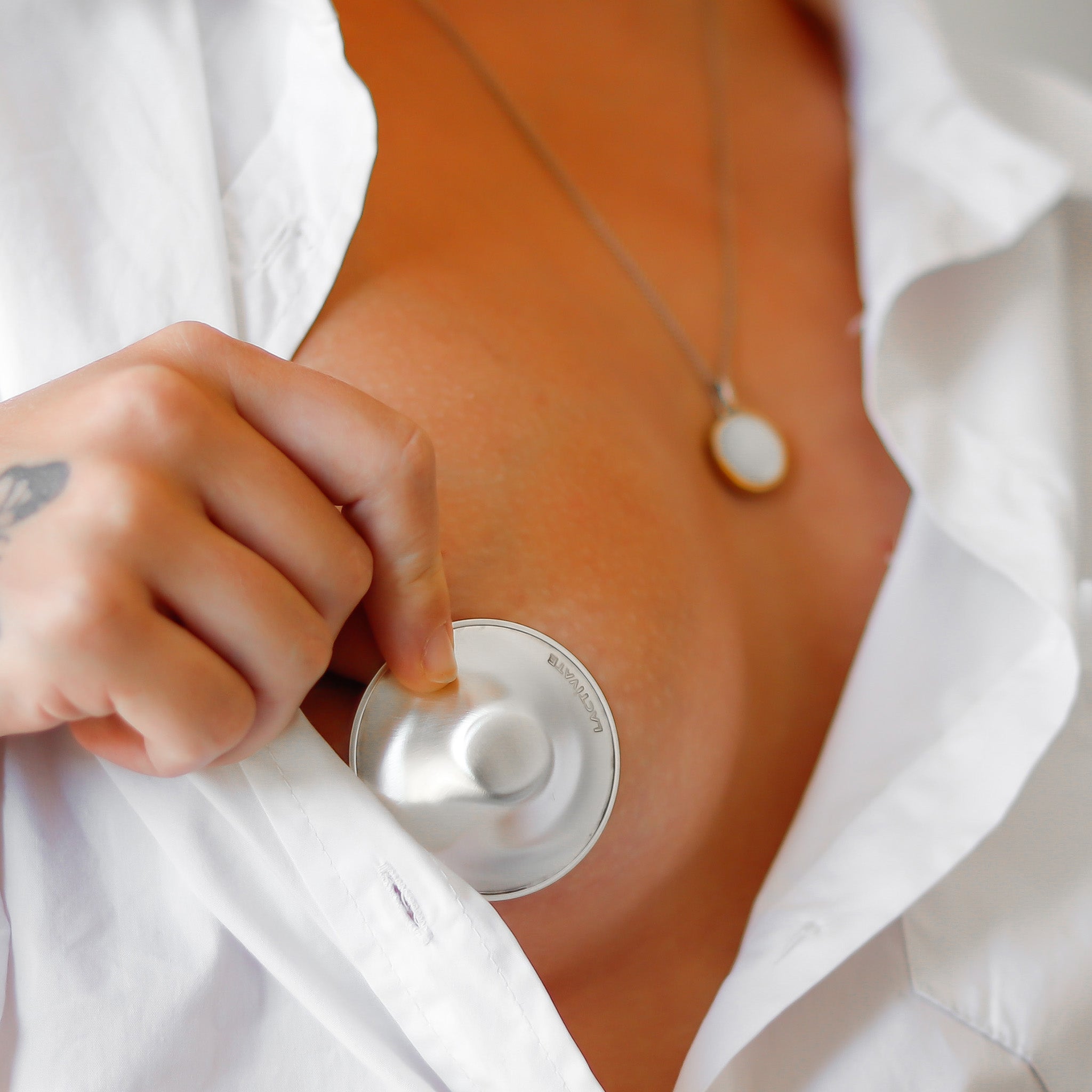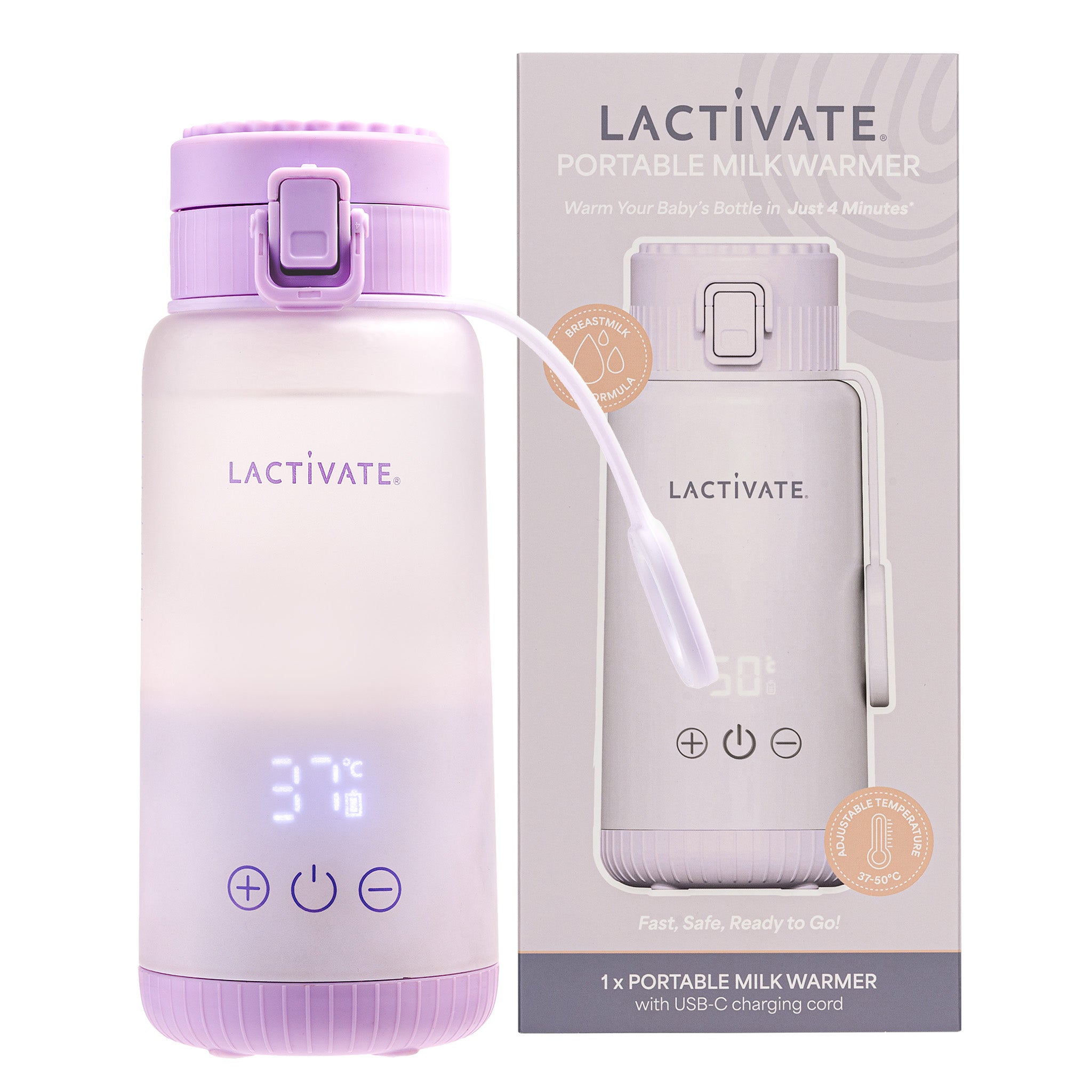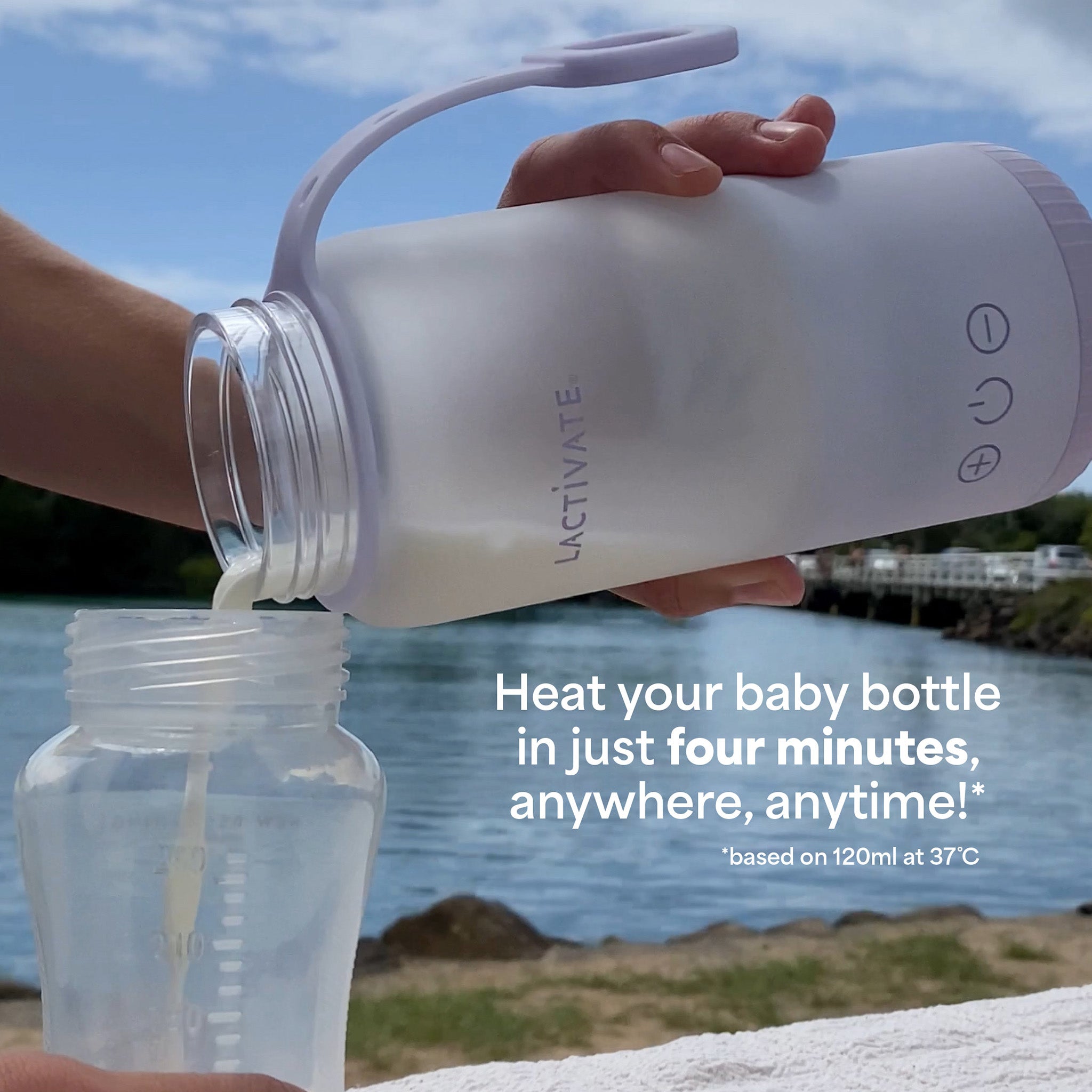Baby showing all the signs of being ready to start eating real food? Exciting (messy!) times are ahead! Starting solids can sometimes seem a little bit daunting, especially when your little one has existed solely on milk since birth! But fear not, we've got you covered with our top tips for getting on the food train!
How To: Introduce Solids
A quick note; there is always a lot of chatter around when the right age/time is to introduce solid food to your bub. Here at Milkbar, we adhere to the World Health Organisation recommendation that solids should be started around 6 months of age. This should be alongside breastmilk/formula as, especially in the beginning, your little one will only be eating very small amounts of food (they'll likely be getting more on their face than anywhere else!)
Is my baby ready for solids? Look for the signs
Knowing when your baby is ready to start food is probably the most important step when it comes to introducing solids. And all bubs will hit this point at different times. Some will be super interested from 5.5-6 months, others might be less than enthusiastic till a little later. Our advice? Don't rush it and don't stress too much if your just-turned-6-months-old little one isn't showing much interest.
While certain minerals like iron and zinc start are required as bub gets older, milk (breastmilk or formula) will still be the primary source of nutrition in the early days of solids (the 5-7 month mark) so you can rest easy knowing your baby is still getting plenty of nutrients. As your baby adjusts to eating, this will gradually start to shift and they will begin to get more nutrients from food and slightly less from milk.
Here's what to keep an eye out for if you think your baby is getting close to the solids stage.
- Your bub will be around the 6 month mark, as per WHO guidelines.
- They will be able to comfortably sit upright without support.
- They will have lost the tongue thrust reflex (this pushes food and other items out of your bubs mouth and will start to disappear as they get older).
- They will show an interest in food and what the people around them are eating (though its worth noting that younger babies who may not be quite ready for food will often show interest in what their parents are holding/eating and enjoy putting everything in their mouth).
Where to start
Most parents start with a vague idea of how they might like to introduce solids. Usually it's via something like Baby Led Weaning, where your bub eats the same food as the rest of the family, purée/baby specific foods or a mix of the two. Let's take a closer look at how these two primary methods differ.
Baby Led Weaning
Baby Led Weaning or BLW is all about forgoing traditional purées and mashes and letting baby eat whatever the rest of the family is eating (with some exceptions/modifications as necessary).
As the name suggests, your baby will set the pace and feed themselves without much intervention or assistance from you. The general first step for BLW is offering finger foods for baby to explore. Be warned though, BLW can get very (very) messy! It is however a very easy, fun way to start solid foods and you can offer pretty much whatever you like (except for honey and whole nuts prior to 12 months). From toast fingers to lamb chops, veggie sticks to boiled egg, it's all fair game when it comes to BLW.
Below are some great examples of BLW friendly foods but you will often find that the majority of foods can be modified to suit your little one.

Image source: Jenna Helwig
It is worth noting that BLW babies will often eat less than their spoon fed peers, mainly due to the fact that they are controlling their intake as opposed to a parent. While breast milk or formula will still provide a large portion of necessary nutrients, iron levels do begin to dip after 6 months and require some food intake to remain steady. The best way to keep this under control is by regularly offering a range of iron-rich finger foods for bub to enjoy or, if you're really concerned or your caregiver has flagged a need for a more iron-rich diet, you could try adding in a mash or similar to ensure bub gets what they need.
When we say messy, we mean it!
What about choking?
The biggest fear of parents when introducing solids is often choking (which is totally understandable). While BLW, when introduced at the right time (i.e. when baby is sitting up unsupported and has lost their tongue thrust reflex), with the right foods does not increase the chances of choking, it can lead to more gagging as bub works out exactly how their mouth works! It's important to note that there is a BIG different between gagging and choking.
Gagging is a natural reflex for babies as it helps them to move pieces of food to the front of their mouth so that they're able to chew it. Food, especially in the early days, is unfamiliar and can take a bit of getting used to. When a baby gags, they'll generally make a bit of noise then either swallow or spit out the offending food. Gagging actually protects against choking which is always reassuring to know. The video below gives a great picture of what gagging looks and sounds like.
You can also try a teething feeder or similar which can be filled with a variety of foods, sealed and then offered to baby. This is a great little tool for the early days of BLW and food exploration.
Shop our Haakaa Feeder Teethers
Purée/mashes/baby food
The other option when starting solids is to offer purée and mashes AKA baby food. Purées are offered via spoon in different flavour combinations to help baby get used to the taste of food. Some parents opt to introduce a single ingredient at a time while others may choose to combine or offer a variety of different things.
Often, as bub gets older, lumpier texture will be offered alongside finger foods or chunkier meals.
Purée and mash is a more parent driven method of feeding but will likely lead to less gagging and potentially a clearer idea of what flavours, tastes and textures baby enjoys. Starting solids with purées can sometimes be time consuming due to the food prep required (i.e. steaming, puréeing, freezing).
But what about puree when on the go? This is where the Haakaa Silicone Yummy Pouch and the Haakaa Silicone baby Food Dispensing Spoon come in handy! they make storing, carrying and feeding purees on the go a breeze. Plus they are eco-friendly as they are reusable and made from 100% food grade silicone.
Shop our Starting Solids collection
As is the way with almost every part of parenting, there is no 'right' way to introduce solids (well, as long as you're following all the safety guidelines!). Some families will find BLW works best for them while others may prefer to start with purée and go from there.
Our top tips
- Invest in plenty of wipe clean bibs, a good messy mat for under the highchair and always have a pack of wipes or washcloth handy! You'll be needing it!
- Try not to stress too much about how much your bub is eating. In the early days it's likely to be more about exploration than actually eating.
- Fruit is always a great option. Peeled, cut into chunks or slices, popped in a feeder teether, steamed or mashed, it's the perfect snack for little ones.
- Make family meals work for your baby - There is usually a component of most family meals that can be modified for bub. Roast veggies, fresh veggies (cucumber, carrot, cherry tomatoes cut in the half), mashes, well cooked meats and even breads etc are all perfect first foods.
Remember, introducing solids is exciting and can be a lot of fun! Seeing your little one start to enjoy food and be part of family meals is a huge step into the next stage.

